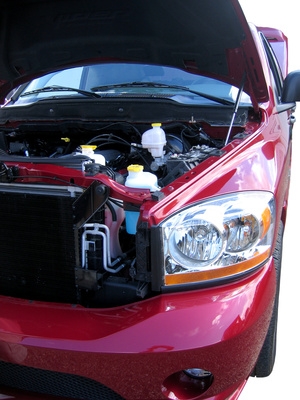
The Dodge Charger is a high-performance four-door sedan with a powerful six-liter eight-cylinder "Hemi" engine. The Charger's high performance makes regular tune-ups a must if the car is to perform satisfactorily. Regular tune-ups sustain horsepower and gas mileage and lead to optimum life for the engine and other Charger components. At 60,000 miles the Charger should undergo a complete stem-to-stern tune-up so the next year or two with this automobile is as exciting and exhilarating as the first.
Many car owners confuse tune-ups with oil and filter changes. Although these can also be done with a tune-up (and is recommended by Dodge,) a tune-up is more extensive (and more expensive) and involves replacing certain engine parts and testing performance parameters. The most important thing a tune-up does is it "gets the engine back" to where it was when it was new from the factory.
The Dodge Charger has one spark plug for each cylinder; they are at the end of the spark plug lead wires on top of the engine. Removing the lead wires reveals the spark plug and you can remove it with a spark plug socket and wrench. Replace each plug with new ones with the same specifications. Don't change spark plug types unless you have consulted with the manufacturer's guidelines for cross references. Spark plugs have different power levels and even sizes that can affect the car's performance.
You should replace the distributor cap and rotor. These are at the other end of the spark plug wires. This combination of devices fire the spark plugs in the proper sequential order and can wear with mileage. Replacing the cap and rotor also means getting new wires for the spark plugs. Just replace the entire assembly.
The Dodge Charger has a fuel filter located in a small housing in the fuel line on the driver's side of the engine. Just follow the fuel line back toward the driver's location and it's very accessible. Replacing it means only clean fuel enters the engine and no particles will enter it that can damage the fuel injectors or cylinder rings.
Replacing these two components insures your Dodge Charger will get maximum efficiency and economy from fuel. The PVC recycles unused gas back into the engine to make sure every bit of gas is used to power the motor and doesn't go out the exhaust. The oxygen sensor makes sure the engine mixes gas with air at just the right amounts for optimum performance.
Once all the mechanical replacements are done under the hood, take the time to change the oil, oil filter, air filter and radiator coolant. Putting fresh fluids in your car is the best way to maximize the advantages of a proper tuned-up Dodge Charger.